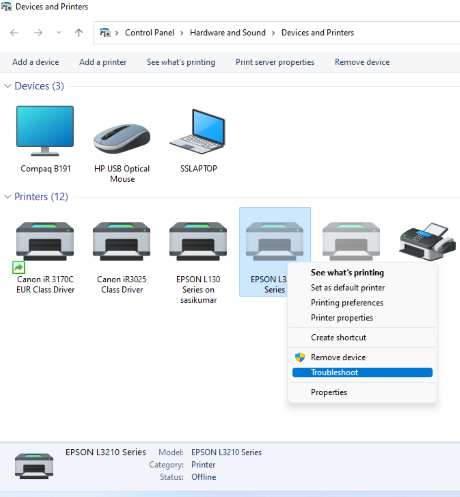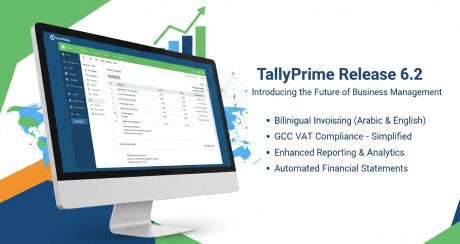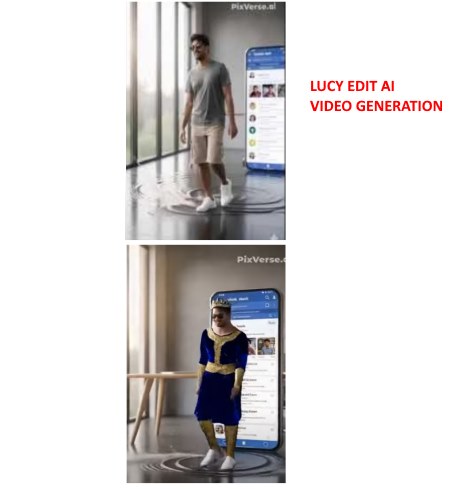IT Technical Support for Developers
Tally Integration Capabilities
Tally prime is hanging, Not responding, not Opening

Reasons for Tally Prime is not responding
How to solve tally prime problemTally Prime is Not Responding Problem क्या हैं और कैसे Solve करे?
This could happen due to various reasons. The first step towards finding the solution for this problem is identifying what is causing Tally to not respond.Data Size Huge
When the data size is huge Tally may take time to load and thus may fail to respond. The solution to this problem is split your data. Year-wise splitting of data is a good practice as it decreases the data load on the system and thus tally will be able to load all the user requests quickly.Error while opening Company
TallyPrime now starts in the Command Prompt. Press Ctrl+Alt+R to repair the company data.Troubleshoot TallyPrime
Press F1 (Help) > Troubleshooting > Repair. Note: If you press Alt+F3 to open a Company and see the status Repair Required against it, then you will need to press Enter on it and follow the procedure of repair. Select the company that you want to repair and press Enter. or Press Ctrl+Alt+R to repair the company data.Multiple users using Tally at the same time
Tally is single threaded and often cannot process two user requests simultaneously. Thus one has to wait for tally to finish the pending tasks and only then it will be able to process new user requests.Tally Prime Startup Problem
Tally is not open a long time, and only logo will display, no menu screenDue to Printer drivers or configuration Tally may hang, troubleshoot all printers which are installed in the computer, and fix if any problem, this will support the tally to open or startup without any delay.

Tally Prime 6.2 What is new

TallyPrime 6.2 — What’s new and how it helps you
A practical, quick reference for accountants, GST practitioners and small business owners.
Last updated: Oct 7, 2025
Executive summary
TallyPrime 6.2 focuses on regional compliance, multilingual invoicing (notably Arabic support), improved auditability with an enhanced edit log, and several bank‑reconciliation and usability improvements. This release is particularly useful for businesses operating in GCC and other multilingual markets.
What's new in TallyPrime 6.2
Multilingual & Arabic invoicing
Export and share invoices in Arabic, English or bilingual PDFs. WhatsApp & email templates support Arabic content.
Default invoice format updates
Invoice Format 2 set as default to align with certain GCC tax authority recommendations; Format 1 still available for compatibility.
Edit log & audit improvements
Permanent edit logs for changes — useful for compliance and audits. Admins can enable/disable depending on policy.
Bank reconciliation & reporting
Improved bank reconciliation summary, manual reconciliation reporting and navigation to reconciled transactions.
Why this matters
- Regional compliance: GCC‑focused defaults and Arabic support reduce manual formatting and speed up invoicing for Middle East businesses.
- Audit readiness: Edit logs make it easier to show traceability for changes during internal/external audits.
- Improved workflows: Better bank recon and document export reduces reconciliation time and customer communication friction.
Upgrade checklist — quick & safe
- Backup your company data — always take a fresh backup (TallyVault or local backup) before upgrading.
- Check add‑ons & customizations — confirm that any TDL add‑ons or third‑party integrations support 6.2.
- Test in a sandbox — restore the backup to a test machine and validate invoices, reports, and bank reconciliation flows.
- Enable edit log (if required) — set the edit log policy and notify users of audit tracking.
- Train users — show the new invoice export and WhatsApp/email templates, especially if your business will use Arabic templates.
Quick command / note
<!-- Example: share invoice via WhatsApp (conceptual) -->
1. Generate invoice in TallyPrime
2. Choose Export > PDF (Arabic / English / Bilingual)
3. Use Share > WhatsApp template to send
Note: The exact menu names may vary on your localised build. Always test before rolling out to production.FAQ
Summary
How to Integrate PHP with Tally using XML

Tally Interfaces – For Integration PHP Sample Code
How to Export data from tally using php?
<?php
$requestXML = '<ENVELOPE>'.
'<HEADER>'.
'<TALLYREQUEST>Export Data</TALLYREQUEST>'.
'</HEADER>'.
'<BODY>'.
'<EXPORTDATA>'.
'<REQUESTDESC>'.
'<REPORTNAME>Daybook</REPORTNAME>'.
'<STATICVARIABLES>'.
'<SVEXPORTFORMAT>$$SysName:XML</SVEXPORTFORMAT>'.
'</STATICVARIABLES>'.
'</REQUESTDESC>'.
'</EXPORTDATA>'.
'</BODY>'.
'</ENVELOPE>';
$serverip = "localhost:9000";
$curl = curl_init($serverip);
curl_setopt($curl, CURLOPT_HTTPHEADER, array('Accept-Charset:UTF-8'));
$contentarray = array("content-type:text/xml;charset:UTF-8");
curl_setopt($curl, CURLOPT_HTTPHEADER, $contentarray);
curl_setopt($curl,CURLOPT_RETURNTRANSFER, 1);
curl_setopt($curl, CURLOPT_HEADER, 0);
curl_setopt($curl, CURLOPT_POST, 1);
curl_setopt($curl, CURLOPT_POSTFIELDS, $requestXML); // post the xml
curl_setopt($curl, CURLOPT_TIMEOUT, 300000); // set timeout in seconds
curl_setopt($curl,CURLOPT_ENCODING,"UTF-8");
$xmlstr = curl_exec ($curl);
if (!$xmlstr) die("No Response from tally: Curl");
// var_dump(curl_getinfo($curl, CURLINFO_CONTENT_TYPE));
curl_close ($curl);
echo ($xmlstr);
Create Sales Order using xml request to Tally erp 9

How to Create Sales Order using xml request to Tally erp 9
<ENVELOPE>
<HEADER>
<TALLYREQUEST>Import Data</TALLYREQUEST>
</HEADER>
<BODY>
<IMPORTDATA>
<REQUESTDESC>
<REPORTNAME>All Masters</REPORTNAME>
<STATICVARIABLES>
<SVCURRENTCOMPANY>company</SVCURRENTCOMPANY>
</STATICVARIABLES>
</REQUESTDESC>
<REQUESTDATA>
<TALLYMESSAGE xmlns:UDF="TallyUDF">
<VOUCHER VCHTYPE="Sales Order" ACTION="Create">
<DATE>#fromdate</DATE>
<PARTYNAME>CustomerName</PARTYNAME>
<VOUCHERTYPENAME>Sales Order</VOUCHERTYPENAME>
<VOUCHERNUMBER>4</VOUCHERNUMBER>
<REFERENCE>14</REFERENCE>
<PARTYLEDGERNAME>A.R.AUTO PARTS</PARTYLEDGERNAME>
<BASICBASEPARTYNAME>A.R.AUTO PARTS</BASICBASEPARTYNAME>
<FBTPAYMENTTYPE>Default</FBTPAYMENTTYPE>
<PERSISTEDVIEW>Invoice Voucher View</PERSISTEDVIEW>
<BASICBUYERNAME></BASICBUYERNAME>
<LEDGERENTRIES.LIST>
<OLDAUDITENTRYIDS.LIST TYPE="Number">
<OLDAUDITENTRYIDS>-1</OLDAUDITENTRYIDS>
</OLDAUDITENTRYIDS.LIST>
<LEDGERNAME>A.R.AUTO PARTS</LEDGERNAME>
<GSTCLASS/>
<ISDEEMEDPOSITIVE>Yes</ISDEEMEDPOSITIVE>
<LEDGERFROMITEM>No</LEDGERFROMITEM>
<REMOVEZEROENTRIES>No</REMOVEZEROENTRIES>
<ISPARTYLEDGER>Yes</ISPARTYLEDGER>
<ISLASTDEEMEDPOSITIVE>Yes</ISLASTDEEMEDPOSITIVE>
<AMOUNT>-3259.55</AMOUNT>
<BANKALLOCATIONS.LIST> </BANKALLOCATIONS.LIST>
<BILLALLOCATIONS.LIST> </BILLALLOCATIONS.LIST>
<INTERESTCOLLECTION.LIST> </INTERESTCOLLECTION.LIST>
<OLDAUDITENTRIES.LIST> </OLDAUDITENTRIES.LIST>
<ACCOUNTAUDITENTRIES.LIST> </ACCOUNTAUDITENTRIES.LIST>
<AUDITENTRIES.LIST> </AUDITENTRIES.LIST>
<TAXBILLALLOCATIONS.LIST> </TAXBILLALLOCATIONS.LIST>
<TAXOBJECTALLOCATIONS.LIST> </TAXOBJECTALLOCATIONS.LIST>
<TDSEXPENSEALLOCATIONS.LIST> </TDSEXPENSEALLOCATIONS.LIST>
<VATSTATUTORYDETAILS.LIST> </VATSTATUTORYDETAILS.LIST>
<COSTTRACKALLOCATIONS.LIST> </COSTTRACKALLOCATIONS.LIST>
</LEDGERENTRIES.LIST>
<ALLINVENTORYENTRIES.LIST>
<STOCKITEMNAME>01-0\11332W STD</STOCKITEMNAME>
<ISDEEMEDPOSITIVE>No</ISDEEMEDPOSITIVE>
<ISLASTDEEMEDPOSITIVE>No</ISLASTDEEMEDPOSITIVE>
<ISAUTONEGATE>No</ISAUTONEGATE>
<ISCUSTOMSCLEARANCE>No</ISCUSTOMSCLEARANCE>
<ISTRACKCOMPONENT>No</ISTRACKCOMPONENT>
<ISTRACKPRODUCTION>No</ISTRACKPRODUCTION>
<ISPRIMARYITEM>Yes</ISPRIMARYITEM>
<ISSCRAP>No</ISSCRAP>
<RATE>1100.05/Nos</RATE>
<AMOUNT>2200.10</AMOUNT>
<ACTUALQTY>2 Nos</ACTUALQTY>
<BILLEDQTY>2 Nos</BILLEDQTY>
<BATCHALLOCATIONS.LIST>
<BATCHNAME>Primary Batch</BATCHNAME>
<INDENTNO/>
<ORDERNO>5</ORDERNO>
<TRACKINGNUMBER/>
<DYNAMICCSTISCLEARED>No</DYNAMICCSTISCLEARED>
<AMOUNT>2200.10</AMOUNT>
<ACTUALQTY> 2 Nos.</ACTUALQTY>
<BILLEDQTY> 2 Nos.</BILLEDQTY>
<ORDERDUEDATE>27-Oct-2015</ORDERDUEDATE>
<ADDITIONALDETAILS.LIST> </ADDITIONALDETAILS.LIST>
<VOUCHERCOMPONENTLIST.LIST> </VOUCHERCOMPONENTLIST.LIST>
<UDF:SHIPPEDBY.LIST DESC="`Shipped By``SpeedProduct``ItemPriceLevel`" ISLIST="YES" TYPE="String" INDEX="1">
<UDF:SHIPPEDBY DESC="`Shipped By``SpeedProduct``ItemPriceLevel`">RETAIL</UDF:SHIPPEDBY>
</UDF:SHIPPEDBY.LIST>
</BATCHALLOCATIONS.LIST>
<ACCOUNTINGALLOCATIONS.LIST>
<LEDGERNAME>CAM SHAFTS SALES</LEDGERNAME>
<GSTCLASS/>
<ISDEEMEDPOSITIVE>No</ISDEEMEDPOSITIVE>
<LEDGERFROMITEM>No</LEDGERFROMITEM>
<REMOVEZEROENTRIES>No</REMOVEZEROENTRIES>
<ISPARTYLEDGER>No</ISPARTYLEDGER>
<ISLASTDEEMEDPOSITIVE>No</ISLASTDEEMEDPOSITIVE>
<AMOUNT>2847.77</AMOUNT>
</ACCOUNTINGALLOCATIONS.LIST>
</ALLINVENTORYENTRIES.LIST>
<ALLINVENTORYENTRIES.LIST>
<STOCKITEMNAME>01-0\12170W</STOCKITEMNAME>
<ISDEEMEDPOSITIVE>No</ISDEEMEDPOSITIVE>
<ISLASTDEEMEDPOSITIVE>No</ISLASTDEEMEDPOSITIVE>
<ISAUTONEGATE>No</ISAUTONEGATE>
<ISCUSTOMSCLEARANCE>No</ISCUSTOMSCLEARANCE>
<ISTRACKCOMPONENT>No</ISTRACKCOMPONENT>
<ISTRACKPRODUCTION>No</ISTRACKPRODUCTION>
<ISPRIMARYITEM>No</ISPRIMARYITEM>
<ISSCRAP>No</ISSCRAP>
<RATE>646.67/Nos</RATE>
<AMOUNT>646.67</AMOUNT>
<ACTUALQTY>1 Nos</ACTUALQTY>
<BILLEDQTY>1 Nos</BILLEDQTY>
<BATCHALLOCATIONS.LIST>
<MFDON>#fromdate</MFDON>
<GODOWNNAME></GODOWNNAME>
<BATCHNAME></BATCHNAME>
<DESTINATIONGODOWNNAME></DESTINATIONGODOWNNAME>
<INDENTNO/>
<ORDERNO>4</ORDERNO>
<DYNAMICCSTISCLEARED>No</DYNAMICCSTISCLEARED>
<AMOUNT>646.67</AMOUNT>
<ACTUALQTY>1 Nos</ACTUALQTY>
<BILLEDQTY>1 Nos</BILLEDQTY>
<ORDERDUEDATE>2 Days</ORDERDUEDATE>
</BATCHALLOCATIONS.LIST>
<ACCOUNTINGALLOCATIONS.LIST>
<LEDGERNAME>CAM SHAFTS SALES</LEDGERNAME>
<GSTCLASS/>
<ISDEEMEDPOSITIVE>No</ISDEEMEDPOSITIVE>
<LEDGERFROMITEM>No</LEDGERFROMITEM>
<REMOVEZEROENTRIES>No</REMOVEZEROENTRIES>
<ISPARTYLEDGER>No</ISPARTYLEDGER>
<ISLASTDEEMEDPOSITIVE>No</ISLASTDEEMEDPOSITIVE>
<AMOUNT>646.67</AMOUNT>
</ACCOUNTINGALLOCATIONS.LIST>
</ALLINVENTORYENTRIES.LIST>
</VOUCHER>
</TALLYMESSAGE>
</REQUESTDATA>
</IMPORTDATA>
</BODY>
</ENVELOPE>
குழந்தைகளுக்கான தூயத்தமிழ் பெயர்கள்
How to Enable TCS Calculation on Sale of Goods in Tally ERP 9

Tally Erp9 - HOW TO ENABLE TCS CALCULATION ON SALE OF GOODS
Related Links...
How to Integrate .NET with Tally Using XML
Tally Integration Using XML Read / Write
How to export employees List from tally using xml request
How to export voucher from tally by using IDs - XML format
How to Fetch Tally Products Price List Using xml request
Tally XML stock summary request - Item Wise Stock Summary
Latest Post
/Tally Integration Capabilities
/Artificial Intelligence AI
/Artificial Intelligence AI
/Artificial Intelligence AI
/Artificial Intelligence AI



